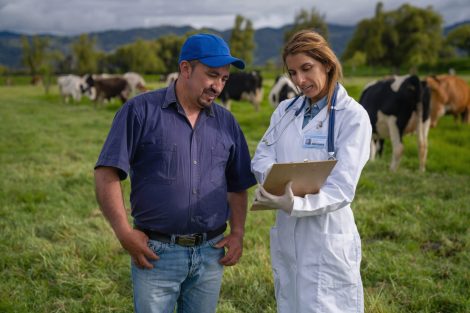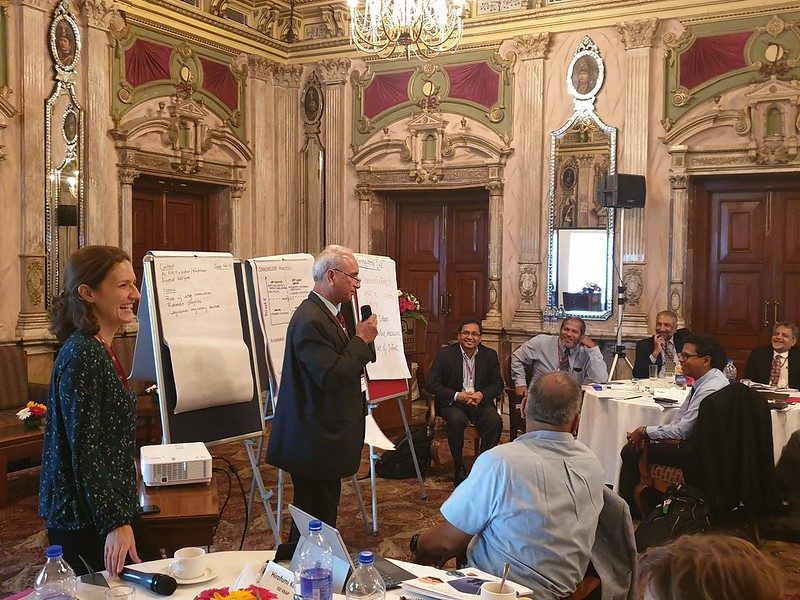Public-Private Partnerships in the veterinary domain
To strengthen the effectiveness of Veterinary Services in the long term, collaborations between the public and private sectors are invaluable. Public-Private Partnerships enable the pooling of resources and create synergies across sectors to help improve access to services that would otherwise be unattainable by either sector working in isolation.

Partnering for long-term positive impacts on animal health
WOAH defines Public-Private Partnerships (PPPs) as a joint approach in which the public and private sectors agree on responsibilities and share resources and risks to achieve common objectives. The establishment of PPPs contributes to a more efficient and effective use of both public and private sector resources and enables each sector to focus on activities most central to their respective responsibilities and capabilities.
When established in a sustainable manner, PPPs can contribute to strengthening the capacity of Veterinary Services in many ways, from policy development to the implementation of large-scale vaccination campaigns. They can also provide a way to balance the development and geographical presence and influence of each sector across a given country.
The relationships and capabilities that are developed through PPPs may also be utilised in emergency management, for instance, if there is a need to respond to a disease outbreak that exceeds the capacity of the public sector.
Building innovative collaborations to address specific needs
There are multiple ways to establish effective PPPs. These collaborations can take several forms according to the type of private partners involved, the funding source, and the governance mechanisms. They can be classified under three main typologies; however, each new PPP can comprise elements from several typologies.
Transactional
Government procurement of specific animal health or sanitary services from private veterinary service providers.
Collaborative
Joint commitment between the public sector and end-beneficiaries to deliver mutually agreed policies or outcomes.
Transformative
Establishment of sustainable capabilities to deliver otherwise unattainable major programmes.
Supporting the establishment of effective PPPs at country level
Despite their proven benefits in the veterinary field, PPPs often remain under-utilised. WOAH recognises the added value that this approach can have for the public sector in fulfilling its missions more efficiently and also for the private sector, by creating the conditions for better, more sustainable business.
As part of its mission to help strengthen Veterinary Services, WOAH is committed to support countries in implementing PPPs. To help its Members explore, plan, implement and monitor such collaborations, WOAH has developed dedicated guidelines, online courses and an open-access database on PPPs.
Our Guidelines for PPPs in the veterinary domain
In order to support countries in the implementation of PPPs, WOAH has produced guidelines for both the public and private sectors, based on successful field experiences. These are gathered in a Handbook.
Our e-learning courses
Several courses are available online to provide a better understanding of what can be obtained from impactful and sustainable public-private partnerships in the veterinary domain.
PPPs in the Veterinary Domain: An Introductory Course
PPPs: Opportunities for Progressive Control of Transboundary Animal Diseases
Our PPP Database
To improve further understanding of the variety of PPP options in the veterinary domain, together with the potential benefits and challenges of such partnerships, our collaborative PPP Database presents examples which have been kindly shared with WOAH by those who developed these partnerships. The aim is to provide information and opportunities to cross-pollinate successful experiences around the world.

How can a country benefit from PPP as part of the PVS Pathway?
WOAH Members already involved in the PVS Pathway
(i.e.: any Member that has completed a PVS Evaluation, Follow-up or Gap analysis mission in the five last years)
National Delegates may send a request for PPP targeted support based on the recommendations on specific competencies/areas included the PVS mission report. WOAH can then propose a 2-3 days face-to-face national PPP workshop in the country.
WOAH Members not recently involved in the PVS Pathway
(i.e.: any Member that has not completed a PVS Evaluation, Follow-up or Gap analysis mission in the five last years)
National Delegates may send a request for PPP targeted support in the areas they are interested in. WOAH can then propose for a PVS Evaluation or Follow-up or Gap analysis mission. Once the final report is available, a 2-3 days face-to-face national PPP workshop can be implemented as relevant.
More information
-
Panorama 2019-3: Public-Private Partnerships and perspectives in the veterinary domain
-
Typological analysis of public-private partnerships in the veterinary domain
-
An evaluation tool to strengthen the collaborative process of the public-private partnership in the veterinary domain
-
Public-Private Partnerships as a means to support the capacities of national Veterinary Services
Our activities on PPP are conducted in collaboration with Cirad and EuFMD, with the generous financial support from the Bill & Melinda Gates Foundation.
Contacts
General Contact
Rahul Srivastava
Public-Private Partnership Project Manager [email protected]
